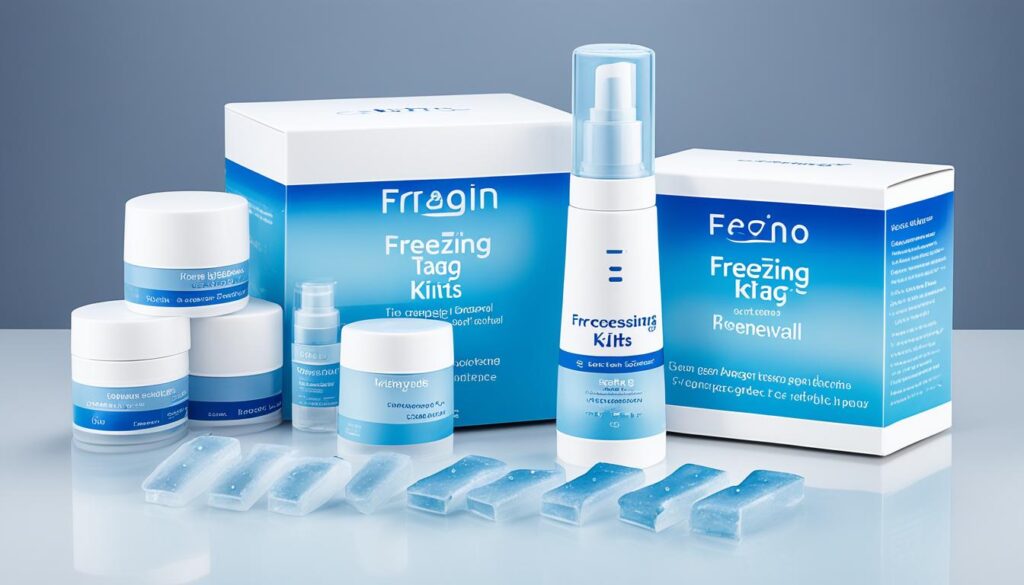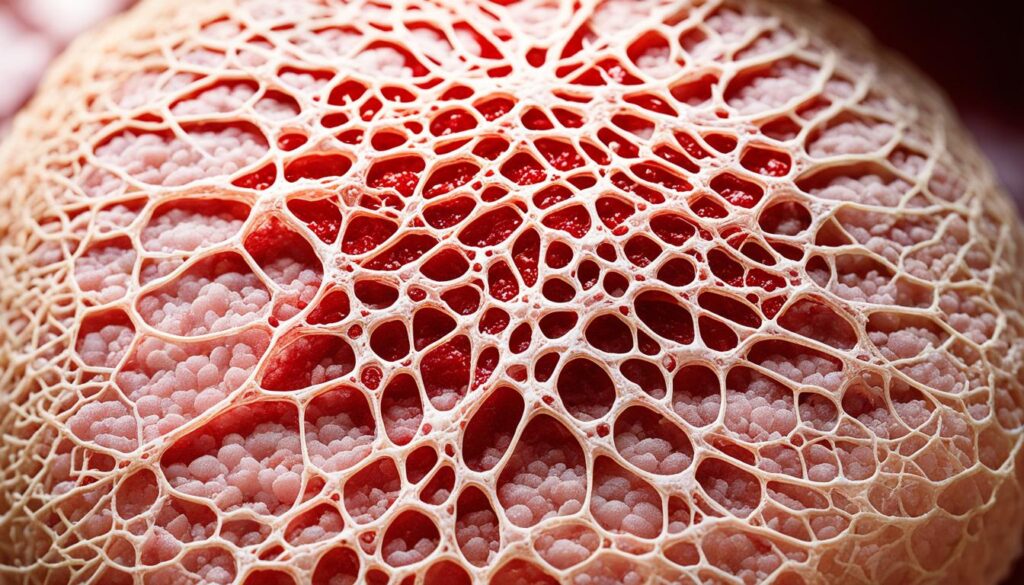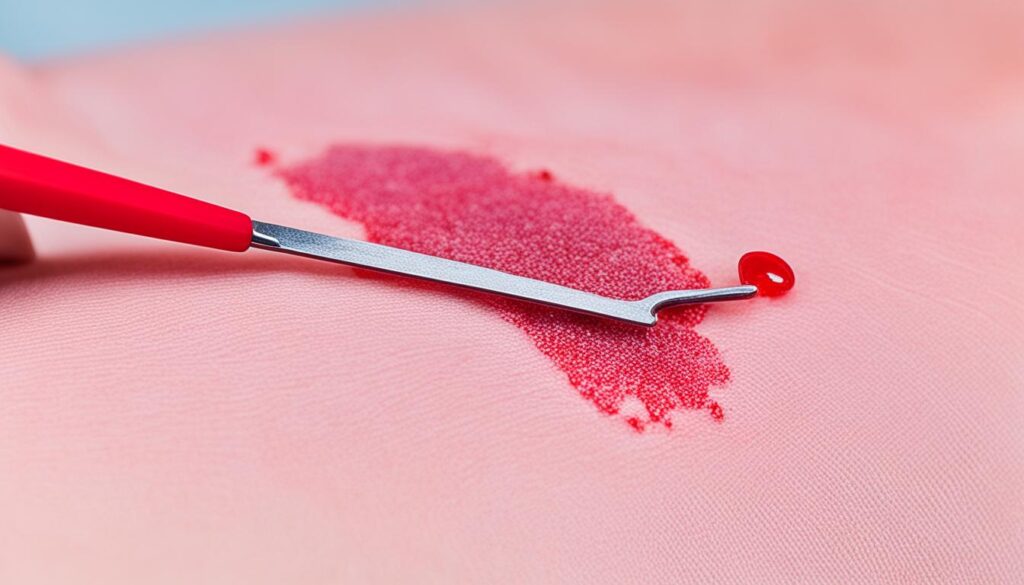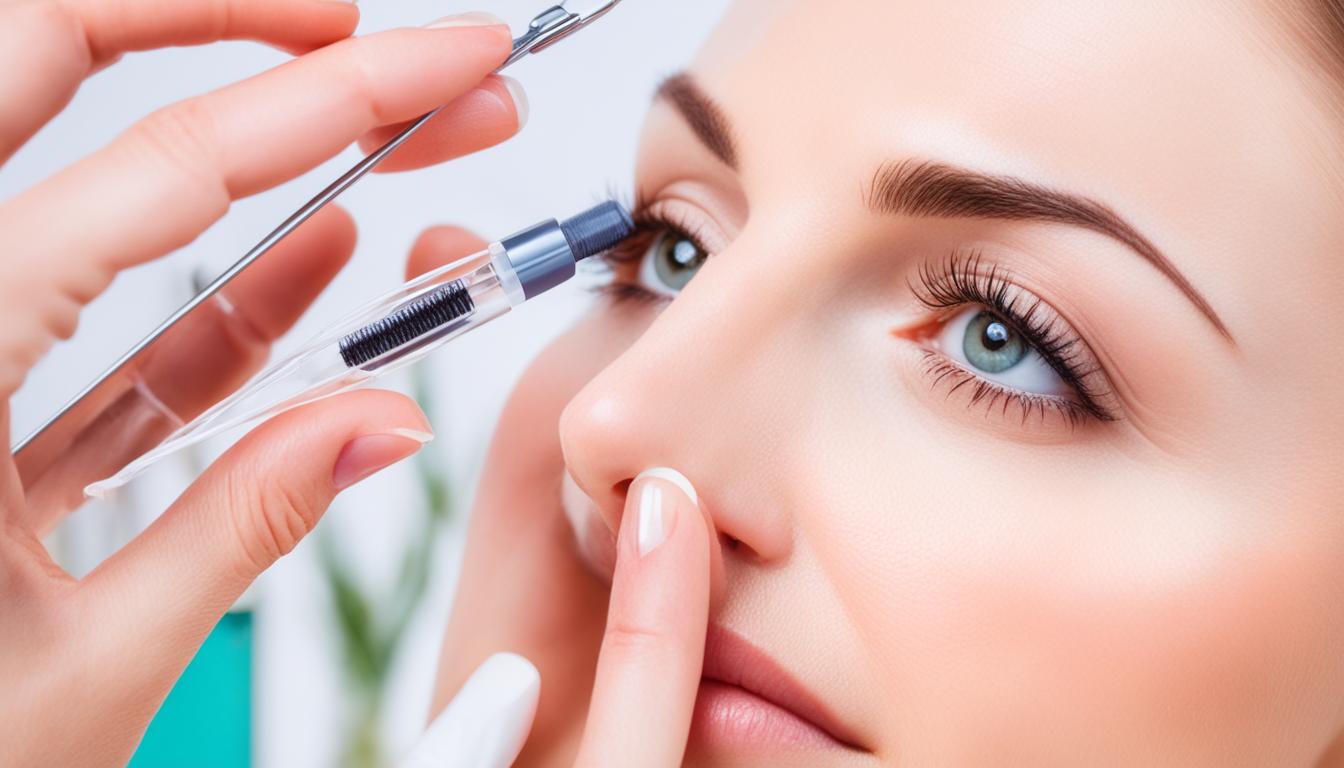Skin tags are common harmless skin growths that can be found on various parts of the body, such as the neck, armpits, or groin. While they are generally benign and not a cause for concern, some people may choose to remove them for cosmetic reasons or if they cause discomfort. If you’re considering DIY skin tag removal at home, it’s important to understand the potential risks and limitations of these methods.
While there are various home remedies and over-the-counter products claiming to remove skin tags, their effectiveness is not supported by scientific evidence. It’s crucial to exercise caution when trying these methods and consult a healthcare professional if the skin tag causes pain or shows any unusual characteristics. Professional removal by a dermatologist ensures proper evaluation and reduces the risk of complications.
In this article, we will explore different methods of skin tag removal, including home remedies, over-the-counter products, and professional medical procedures. We will also discuss the potential risks and dangers of DIY removal and provide essential aftercare tips for a safe and effective recovery process.
Key Takeaways:
- Skin tags are benign growths that are usually harmless and noncancerous.
- DIY skin tag removal methods, such as home remedies and over-the-counter products, are not scientifically proven to be effective.
- Consulting a healthcare professional or dermatologist is recommended for proper evaluation and safe removal of skin tags.
- After skin tag removal, proper wound care and follow-up instructions are essential for healing and preventing infection.
- Considerations such as cost and potential insurance coverage should be discussed with a healthcare provider.
Home Remedies for DIY Skin Tag Removal
When it comes to removing skin tags at home, there are various home remedies that claim to offer a solution. Some of the popular home remedies include:
- Apple Cider Vinegar: This remedy involves applying apple cider vinegar directly onto the skin tag using a cotton ball and covering it with a bandage. It is believed that the acidity of the vinegar helps to break down the skin tag.
- Tea Tree Oil: Tea tree oil is known for its antifungal and antiviral properties. By applying a few drops of tea tree oil directly to the skin tag and covering it, the oil is claimed to gradually shrink the tag.
- Banana Peel: Rubbing the inside of a banana peel onto the skin tag and securing it with a bandage is believed to be an effective remedy. The enzymes present in the banana peel are thought to help dissolve the skin tag over time.
- Vitamin E Oil: Applying vitamin E oil topically onto the skin tag and covering it can potentially soften and reduce the appearance of the tag.
- Garlic: Garlic has natural antibacterial properties. The idea behind this remedy is to crush fresh garlic and apply it directly to the skin tag, covering it with a bandage.
While these home remedies may seem appealing, it is important to note that there is limited scientific evidence to support their effectiveness. Skin tags are typically harmless and benign growths, and removing them with home remedies may not always provide the desired results.
Additionally, there are over-the-counter products available such as skin tag removal bands and removal patches. These products claim to gradually remove the skin tags by cutting off their blood supply. However, their efficacy is uncertain and should be used with caution.
If you are considering using home remedies or over-the-counter products for skin tag removal, it is recommended to consult a healthcare professional or dermatologist for proper evaluation and guidance. They can provide personalized advice and determine if further medical intervention is necessary.
While home remedies may be convenient and cost-effective, it is important to prioritize safety and consult a professional when it comes to the health of your skin.
| Home Remedies | Effectiveness |
|---|---|
| Apple cider vinegar | Uncertain |
| Tea tree oil | Uncertain |
| Banana peel | Uncertain |
| Vitamin E oil | Uncertain |
| Garlic | Uncertain |
| Skin tag removal bands | Uncertain |
| Removal patches | Uncertain |
Over-the-Counter Products for Skin Tag Removal

When it comes to removing skin tags at home, over-the-counter products offer convenience and affordability. Two popular options for skin tag removal are freezing kits and removal creams.
Freezing Kits
Freezing kits utilize cryotherapy to eliminate skin tags. These kits usually contain a freezing agent like liquid nitrogen or dimethyl ether propane. The freezing agent is applied to the skin tag using a special applicator or nozzle, causing the growth to freeze and eventually fall off.
It is important to note that freezing kits may require multiple applications before noticeable results are achieved. Additionally, some individuals may experience discomfort or a mild stinging sensation during the freezing process. If there are concerns or if the skin tag does not respond to the treatment after several attempts, it is advisable to consult a healthcare professional.
Removal Creams
Another option for over-the-counter skin tag removal is the use of removal creams. These creams typically contain ingredients like salicylic acid, tea tree oil, or other natural substances known for their skin-dissolving properties. Removal creams work by gradually breaking down the tissue of the skin tag, causing it to diminish in size or fall off completely.
However, it is important to exercise caution when using removal creams as they can cause skin irritation and contact dermatitis in some individuals. If any adverse reactions occur, such as redness, swelling, or itching, the use of the cream should be discontinued immediately.
It is worth mentioning that over-the-counter products for skin tag removal are not regulated by the FDA, and their effectiveness may vary. Therefore, it is essential to carefully follow the instructions provided with the product and to seek professional advice if needed.
Safe and Effective Medical Procedures for Skin Tag Removal

When it comes to removing skin tags, medical procedures performed by healthcare professionals offer safe and effective options. These procedures are designed to ensure proper removal while minimizing the risk of complications such as infection and scarring. Let’s explore some of the commonly used medical procedures for skin tag removal:
1. Excision (Surgical Removal)
Excision involves surgically removing the skin tag using a scalpel or surgical scissors. This method is suitable for larger skin tags or those located in delicate areas. It ensures complete removal and may require stitches for proper wound closure.
2. Cauterization (Burning Off the Skin Tag)
Cauterization involves burning off the skin tag using a heated instrument or electric current. This method effectively destroys the unwanted tissue and cauterizes the wound, minimizing the risk of bleeding. It is commonly used for smaller skin tags or those in easily accessible areas.
3. Cryosurgery (Freezing the Skin Tag)
Cryosurgery involves freezing the skin tag using liquid nitrogen or a similar freezing agent. The freezing process destroys the skin tag’s cells, causing it to fall off within a few weeks. Cryosurgery is suitable for smaller skin tags and is relatively painless, with minimal scarring.
4. Ligation (Cutting off the Blood Supply)
Ligation involves cutting off the blood supply to the skin tag by tying it off with a small surgical thread or string. This method deprives the tag of oxygen and nutrients, causing it to shrink and eventually fall off. Ligation is often used for larger skin tags or those with a narrow base.
Each procedure has its benefits and considerations, depending on the size and location of the skin tag. Consulting a dermatologist or healthcare provider is crucial to determine the most suitable method for skin tag removal, particularly for sensitive areas. These professionals have the expertise to perform the procedures safely and effectively.
Aftercare Tips for Skin Tag Removal

Proper aftercare is essential for promoting healing and preventing infection after skin tag removal. The specific aftercare steps may vary depending on the removal method used.
Excision or Cauterization:
If the skin tag was removed through excision (surgical removal) or cauterization (burning off), a bandage may be applied to the wound for several days to protect it from bacteria and promote healing. An antibiotic ointment may also be recommended to prevent infection and aid in the healing process.
Cryosurgery:
If cryosurgery (freezing) was used to remove the skin tag, the area will typically form a blister and the skin tag will fall off on its own within approximately 10 days. It is important to leave the blister intact to allow for proper healing. Keeping the area clean, dry, and protected is crucial during this time.
Wound Care:
Regardless of the removal method, proper wound care is essential for optimal healing. Here are some general aftercare tips:
- Keep the area clean by gently washing it with mild soap and warm water.
- Dry the area thoroughly by patting it gently with a clean towel. Avoid rubbing or scrubbing the wound.
- Avoid touching the wound with dirty hands to prevent introducing bacteria.
- Avoid applying alcohol, peroxide, or iodine to the wound, as they can slow down the healing process and irritate the skin.
It is important to follow any additional care instructions provided by your healthcare provider. If the wound requires stitches, make sure to keep the area dry and avoid activities that may cause the stitches to come undone. If you experience any excessive pain, bleeding, or signs of infection, such as redness, swelling, or pus, seek medical attention immediately.
| Removal Method | Aftercare Instructions |
|---|---|
| Excision or Cauterization | Apply a bandage for several days and use antibiotic ointment. Keep the area clean and dry. |
| Cryosurgery | Allow the blister to heal naturally and keep the area clean, dry, and protected. |
Factors Contributing to Skin Tag Development

Skin tags are common benign growths that can develop in various areas of the body. Several factors contribute to their formation, including:
- Skin irritation and friction: Skin tags are more likely to develop in areas where the skin experiences constant rubbing or irritation, such as the neck, armpits, and groin.
- Overweight or obesity: Research suggests that individuals who are overweight or obese have a higher risk of developing skin tags. The exact mechanism behind this association is not yet fully understood, but it may be due to changes in hormone levels and increased friction in skin folds.
- Pregnancy: Hormonal changes during pregnancy can lead to the development of skin tags. The increased levels of certain hormones may contribute to their formation.
- Human papillomavirus (HPV): Some studies have suggested a potential link between HPV infection and the development of skin tags. However, more research is needed to establish a definitive connection.
- Insulin resistance and metabolic syndrome: Individuals with insulin resistance or metabolic syndrome, conditions associated with poor blood sugar control, have a higher prevalence of skin tags. This may be due to the underlying metabolic changes and hormonal imbalances.
While these factors may increase the likelihood of developing skin tags, it is essential to note that most skin tags are harmless and do not require treatment unless they cause discomfort or aesthetic concerns.
| Factors Contributing to Skin Tag Development | Description |
|---|---|
| Skin Irritation and Friction | Skin tags are more likely to develop in areas where the skin experiences constant rubbing or irritation, such as the neck, armpits, and groin. |
| Overweight or Obesity | Research suggests that individuals who are overweight or obese have a higher risk of developing skin tags. The exact mechanism behind this association is not yet fully understood, but it may be due to changes in hormone levels and increased friction in skin folds. |
| Pregnancy | Hormonal changes during pregnancy can lead to the development of skin tags. The increased levels of certain hormones may contribute to their formation. |
| Human Papillomavirus (HPV) | Some studies have suggested a potential link between HPV infection and the development of skin tags. However, more research is needed to establish a definitive connection. |
| Insulin Resistance and Metabolic Syndrome | Individuals with insulin resistance or metabolic syndrome, conditions associated with poor blood sugar control, have a higher prevalence of skin tags. This may be due to the underlying metabolic changes and hormonal imbalances. |
Understanding the factors contributing to skin tag development can help individuals take preventive measures and make informed decisions about their removal.
Risks and Dangers of DIY Skin Tag Removal

While DIY skin tag removal may seem like a convenient option, it is essential to consider the risks and dangers associated with it. Attempting to remove skin tags at home without proper evaluation and guidance from a healthcare professional can lead to potential complications.
One of the primary risks is the potential for infection. When using home remedies or over-the-counter products without proper evaluation, the risk of introducing bacteria or other harmful microorganisms to the skin increases. Infection can cause pain, redness, swelling, and further complications.
Bleeding is another potential danger of DIY skin tag removal. Skin tags have a blood supply, and removing them improperly can result in profuse bleeding. It can be challenging to control bleeding, especially in delicate areas like the face or genitals, leading to unnecessary risks and complications.
Scarring is a common concern when attempting DIY skin tag removal. Improper techniques or aggressive removal methods can lead to visible scars, which can be both aesthetically and emotionally distressing. The goal of skin tag removal is to achieve a smooth and scar-free outcome, making professional guidance crucial.
It is important to consult a healthcare professional for the safe and effective removal of skin tags. Professional evaluation ensures the proper identification of skin tags and distinguishes them from other skin conditions, reducing the risk of ineffective treatment or the unnecessary removal of non-skin tag growths.
DIY methods such as cutting or clipping off a skin tag with nail clippers should be avoided at all costs. These methods can result in pain, bleeding, and complications. It is essential to prioritize safety and seek professional guidance when it comes to skin tag removal.
Quote:
“Attempting DIY skin tag removal without professional evaluation can lead to infection, bleeding, and scarring. Consulting a healthcare professional ensures safe and effective removal.”
Risks and Dangers of DIY Skin Tag Removal Table
| Risks and Dangers | Description |
|---|---|
| Infection | Potential introduction of bacteria and other harmful microorganisms to the skin |
| Bleeding | Potential for profuse bleeding due to improper removal techniques |
| Scarring | Visible scars that can result from aggressive DIY removal methods |
Professional Skin Tag Removal Costs and Considerations

When considering skin tag removal, it’s important to understand the costs and considerations surrounding professional procedures. The cost of skin tag removal can vary depending on several factors:
- Location: The cost may differ based on the geographical area and local competition among healthcare providers.
- Facility Type: The type of facility where the procedure is performed, such as a dermatology clinic or a specialized skin tag removal center, can influence the cost.
- Number of Skin Tags: The more skin tags that need to be removed, the higher the cost may be.
While health insurance plans typically don’t cover skin tag removal unless it is necessary for physical or mental health reasons, it is considered a cosmetic procedure. Thus, the cost of skin tag removal is usually an out-of-pocket expense.
To better understand the potential costs involved, it is recommended to consult with a healthcare provider or dermatologist. They can provide personalized guidance based on your specific situation and help determine the most suitable and cost-effective option for your skin tag removal needs.
Summary of Professional Skin Tag Removal Costs and Considerations:
| Factors | Description |
|---|---|
| Location | The cost may vary depending on the geographical area and local competition among healthcare providers. |
| Facility Type | The type of facility where the procedure is performed can influence the cost. |
| Number of Skin Tags | The more skin tags that need to be removed, the higher the cost may be. |
| Health Insurance Coverage | Health insurance plans typically do not cover skin tag removal unless deemed necessary for physical or mental health reasons. |
By considering these factors and consulting with a healthcare professional, you can make an informed decision about professional skin tag removal that aligns with your needs and budget.
Understanding Skin Tags and Their Characteristics

Skin tags are common, benign growths that typically occur in areas of the body where the skin experiences friction or irritation. They are usually soft and noncancerous, composed of collagen fibers and surrounded by a layer of skin. While skin tags can be hereditary and run in families, they are not contagious.
Most skin tags do not require removal unless they cause discomfort or aesthetic concerns. However, it is important to consult a healthcare professional for a proper diagnosis and to distinguish skin tags from other skin conditions.
Here are some key characteristics of skin tags:
- Common, benign growths
- Soft and noncancerous
- Occur in areas of friction or irritation
- Composed of collagen fibers
- Surrounded by a layer of skin
- Can be hereditary
- Not contagious
Proper identification of skin tags is crucial to ensure appropriate treatment and avoid unnecessary removal. If you have any concerns or questions about skin tags, it is best to seek advice from a healthcare professional.
Skin tags, also known as acrochordons, are common benign growths that can appear on various areas of the skin. They typically develop in areas where the skin rubs against itself, such as the neck, armpits, groin, and eyelids. While skin tags aren’t harmful, they can cause skin irritation or discomfort, especially if they’re in locations prone to friction.
Although some people may get skin tags without any also want to remove known cause, others may be predisposed due to factors like genetics, obesity, or hormonal changes. Removing skin tags can be done through various methods, including medical procedures like cauterization, tag to reduce cryotherapy, or surgical excision, as well as over-the-counter products like skin tag removal creams or at-home remedies such as tag dries out and falls using liquid iodine or tying off the tag until it falls off. However, it’s essential to consult a doctor about skin tags, especially if you have multiple skin tags, large skin tags, or if you’re unsure whether a growth is truly a skin tag or another type of lesion like a mole or skin cancer.
While some claim to remove skin tags using natural remedies or skin tags at some point over-the-counter products, it’s important to exercise caution and seek professional advice, particularly if you’re considering removing skin tags for cosmetic reasons or if they’re causing discomfort. Additionally, preventing skin tags from forming can involve keeping the skin dry and clean, avoiding tight clothing, and maintaining a healthy weight. Ultimately, understanding how to diagnose, treat, and prevent skin tags can help individuals manage these common skin growths effectively.
Also Read : Unlock Radiance With About Face Skin Care Secrets
Conclusion
In conclusion, when it comes to safe and effective skin tag removal, it is crucial to seek professional consultation with a dermatologist or healthcare provider. While DIY methods and over-the-counter products may seem convenient, they often lack scientific evidence and carry potential risks. Home remedies, such as apple cider vinegar or tea tree oil, should be used cautiously, and any skin tag that causes pain, bleeding, or shows unusual characteristics should be evaluated by a medical professional.
By prioritizing safety and seeking professional guidance, individuals can minimize complications and ensure a thorough evaluation of their skin tags. Professional removal procedures, such as excision, cauterization, cryosurgery, or ligation, offer safe and effective options for removing skin tags. Aftercare, including proper wound care, is essential to promote healing and prevent infection.
To make informed decisions regarding skin tag removal, individuals should consider the costs and consult with a healthcare provider or dermatologist. While health insurance usually does not cover skin tag removal as a cosmetic procedure, understanding the potential expenses can help determine the most suitable and cost-effective option.
FAQs
Q: What are skin tags and what causes them?
A: Skin tags are benign skin growths that commonly occur on areas where skin rubs against skin or clothing. The exact cause of skin tags is not known, but they may develop due to friction, hormonal changes, or genetics.
Q: Can I safely remove skin tags at home?
A: Yes, there are various safe and effective home remedies for skin tag removal, such as applying tea tree oil, apple cider vinegar, or tying off the skin tag with a piece of dental floss. It’s important to ensure proper hygiene and technique when attempting at-home removal.
Q: How can I prevent skin tags from developing?
A: To prevent skin tags, you can try to reduce friction on the skin, maintain a healthy weight, and avoid wearing tight clothing. Keeping the skin dry and clean in areas prone to skin tags may also help prevent their formation.
Q: Is it safe to cut off a skin tag myself?
A: It is not recommended to cut off a skin tag at home as it may lead to infection or excessive bleeding. It’s best to consult a healthcare professional for safe and appropriate removal methods.
Q: Are there any natural remedies for skin tag removal?
A: Yes, several natural remedies, such as tea tree oil, apple cider vinegar, or castor oil, have been used for at-home skin tag removal. These remedies should be used with caution and the guidance of a healthcare provider.
Q: Can I use over-the-counter products to remove my skin tags?
A: There are over-the-counter products available for skin tag removal, including creams and ointments. However, it’s essential to follow the instructions carefully and consult a healthcare professional if you have any concerns.
Q: When should I consult a doctor about skin tag removal?
A: It is advisable to consult a doctor if you are unsure about the nature of a skin growth, if the skin tag is bleeding or causing pain, or if you have underlying health conditions that may affect skin tag removal.
Q: Are there any risks associated with at-home skin tag removal methods?
A: At-home skin tag removal methods, if not done properly, may lead to infection, scarring, or incomplete removal. It’s important to be cautious and seek professional advice when considering at-home removal methods.
Q: What is the best way to safely remove skin tags at home?
A: The best way to safely remove skin tags at home is to use remedies like tea tree oil or apple cider vinegar, or to tie off the skin tag with sterile thread or dental floss. Following proper hygiene and technique is crucial for safe removal.
Q: Can I try this at home method for skin tag removal if I have skin lesions or skin cancer?
A: If you have skin lesions or suspect skin cancer, it’s essential to consult a dermatologist or healthcare professional before attempting any at-home skin tag removal methods to ensure the safety and appropriate management of your condition.
